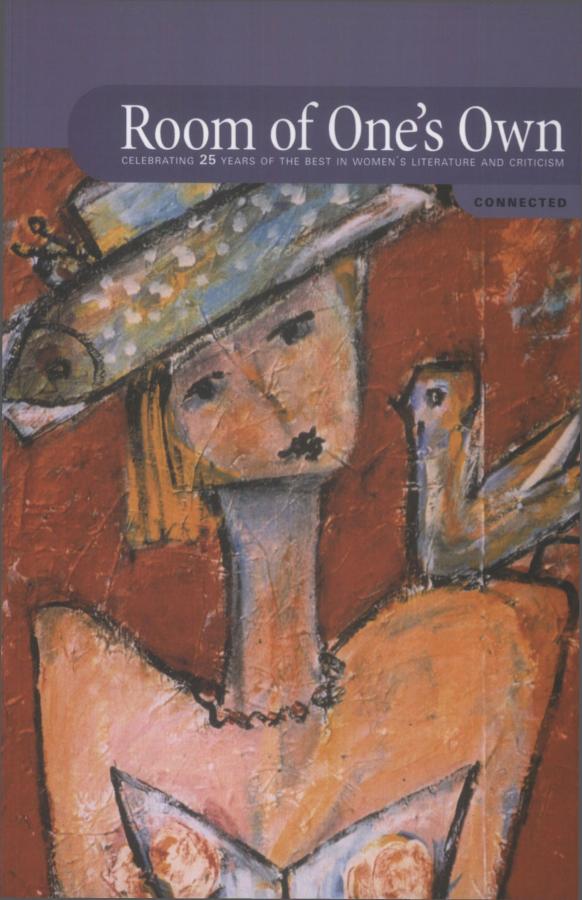Connected | 24.1
2001
Digital only; out of stock in print.
Literature is a funny thing. It has a unique way of bringing together complete strangers—people who know nothing about each other but who. through stories and poetry, can share experiences or outlooks on life.
In the two years that I’ve been involved with Room of One’s Own. I’ve read hundreds of manuscripts, all written by women I don’t know. What most often catches my eye are those works that make me feel as though the authors are writing directly to me. The writing somehow allows me. even if only for a moment, the opportunity to connect with the woman at the other end of the story.
It seems fitting to me, then, that much of the writing in this issue would revolve around connections—whether romantic or friendly, between family members or mere acquaintances, or those that tie us to history or society. And the framework for it all is the connection between author and reader, sustained through something as basic as language.
Several of the stories and poems focus on family connections. The narrator in Marika Deliyannides’ story. “Your Personal History.” recalls her maternal grand mother’s health history after she herself discovers a lump in her breast. She is unwilling to be connected to her grandmother in this way, and instead tries to remember what else she has inherited from her grandmother-anything other than cancer. The theme of family relationships continues in Heather Duff’s “Sugar Bells.” in which a woman’s memories of her grandmother are permanently associated with massive quantities of food.
A series of poems by Alison Watt also touch on family ties. In “Green Line,” the narrator’s connection with her dying mother has been reduced to the hospital’s green heart line. The mother/child relationship recurs in “Maternity Ward—St Paul’s,” when the narrator gives birth to her son.
But the works in this issue are not limited to family connections. In Valerie Stetson’s story “Eleanor’s Saint.” two friends (with a romantic history) reunite, only to discover that their relationship is not what either of them remembers or expects. In “How to Drive Yourself Crazy,” a woman’s life is affected by a twelve-year-old girl she doesn’t even know, after her husband is hired to help determine the outcome of the girl’s rape trial.
Even artist Irina Florov’s series “How can we know the dancer from the dark” reinforces the theme of connections: the intertwined figures visually reflect the dominant theme of the writing in this issue.
Throughout this entire issue, the authors, poets and artist remind us of the unique ways in which we are tied to others—and of how these connections shape who we are and how we see the world.

$10.00
Additional information
| Delivery | Canada, USA, International, Digital |
|---|
In this issue: Virginia Aulin, Marika Deliyannides, Heather Duff, Irina Florov, Karen Horeth, Linda King, kath macLean, Katherine Maxfield, Lynda Monahan, Allyson Rainer, Valerie Stetson, Julia Vella, Alison Watt